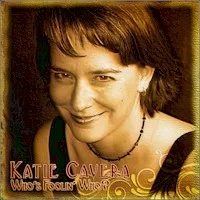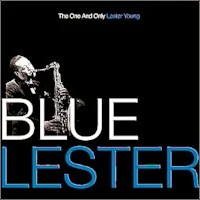
Styles: Vocal Jazz
Year: 2009
File: MP3@320K/s
Time: 38:10
Size: 87,9 MB
Art: Front
(3:12) 1. Willow Weep For Me
(2:51) 2. Do You Know What It Means To Miss New Orleans
(3:40) 3. Jim
(2:56) 4. Gimme A Pigfoot And A Bottle Of Beer
(2:42) 5. Summertime
(3:48) 6. Until The Real Thing Comes Along
(2:01) 7. I Let A Song Go Out Of My Heart
(3:01) 8. When Your Lover Has Gone
(2:36) 9. I Wished On The Moon
(3:12) 10. Willow Weep For Me (Alternate Take)
(2:50) 11. Do You Know What It Means To Miss New Orleans (Alternate Take)
(5:16) 12. Fuse Blues
When I get new jazz compact discs to review, a good percentage feature women jazz singers. I am sure that they are wonderful people who love the music, but many of them have odd ideas of forming a style. Some have ingested every syllable Billie Holiday ever recorded; some rely on huge voices with gospel trimmings to get them through; some meow and growl their way through a lyric, suggesting an undiagnosed hairball problem. Almost all of the new singers emote in capital letters, their voices rich with imagined melodrama. None of these tricks works, but the singers press on. For me, there are perhaps a dozen women singing jazz today if you’ve been reading my posts, you can count them off. Now it’s time to increase that number. May I introduce (or re-introduce) Marty Elkins? I first met Marty perhaps a year ago when she and I ended up sharing a table at the crowded Ear Inn. We chatted pleasantly, and I really had no idea of her talents until Jon-Erik Kellso asked her to sit in and she sang a few choruses of YOU TOOK ADVANTAGE OF ME with the band.
The Ear Inn is more conducive to trumpets and trombones than to unamplified singers, but I could hear that Marty swung, knew the harmonic ins and outs of the song, could improvise neatly, and was expressive without being melodramatic. She used her quiet talents to make the material sound good rather than asking Rodgers and Hart to step aside so that she could shine. When she was through, I asked her if she had recorded CDs that I could hear her better and at greater length. She casually mentioned that she had done a duet session with Dave McKenna years back, and that it would be issued some day. The disc is called IN ANOTHER LIFE, and it’s issued on the splendidly reliable Nagel-Heyer label (CD 114). It captures Marty and Dave in an informal session with good sound, in 1988 when Dave was still in full command. The first thing that must be said will seem tactless, but this CD is not the combination of a young, untried singer with a master pianist. Not at all.
The Elkins , McKenna pairing is a meeting of convivial equals. From the very first notes of this session, she shows off her relaxed, expert naturalness. Her naturalness comes from loving the lyrics that is, knowing what the words mean! and admiring the composer’s original lines. She has a sweet, earnest phrase-ending vibrato, reminiscent of a great trumpet player, and she holds her notes beautifully. Marty’s delivery is full of feeling and warmth, but she doesn’t shout, grind, or act self-consciously hip. Her voice is also attractive wholly on its own terms it has a yearning, plaintive quality that fits the material, but that never overwhelms the song or the listener. On JIM, for instance, a rather masochistic song, Marty embraces and entrances the lyrics without ever suggesting that things are so dire that she needs therapy or an intervention. It’s a performance I found myself going back to several times. And she’s equally home with the somewhat archaic enthusiams of GIMME A PIGFOOT she sings the song rather than singing at it from an ironic distance. (And, as a sidelight, her diction is razor-sharp, enabling me to hear a phrase in the lyrics that has always mystified me in Bessie Smith’s version.) On a number of the other selections, she avoids the perils of over-dramatization (I’m thinking especially of SUMMERTIME, which has attained the status of National Monument, making it almost impossible to sing it plainly without histrionics) by lifting the tempo just a touch what Billie and Mildred did in the Thirties. It works. I was able to hear the most famous and well-worn songs on this disc without thinking of their more famous progenitors. On her second choruses, she improvises, subtly and effectively; her voice takes delicate little turns up or down, which seem both new and natural. And she knows the verse to WHEN YOUR LOVER IS GONE! What more could we ask for? For his part, McKenna is in especially empathetic form: he doesn’t put on his locomotive-roaring-down-the-tracks self, but you always know he’s there. And at times his accompaniment sounds so delicately shaped that I would have sworn Ellis Larkins had slid onto the piano bench. The alternate takes are revealing for both Marty’s subtle reshapings of her first inspirations, and for Dave’s inventiveness and drive.
The CD’s last track, FUSE BLUES, comes from a 1999 Nagel-Heyer session Marty did with Houston Person, Tardo Hammer, Herb Pomeroy, Greg Skaff, Dennis Irwin, Mark Taylor, and it’s a thoroughly naughty composition of Marty’s that will make you look at your electrician in a whole new way. I think it should be Consolidated Edison’s theme song, but doubt that they’ll take me up on it. As an afterthought, because the liner notes are very spare, I asked Marty to comment on the session, which she did: The original recording was just for a demo for me, and Dave really did it as a favor for very little bread as he was an old friend from my days in Boston. I went to Boston U and just kind of stayed up there, hanging around with musicians for about ten years after college. I met Dave at the Copley Plaza hotel, where he was a regular performer, and he let me sing with him and was pretty much my first accompanist. The funny story I always tell is that he said, “When you go out there and sing with other musicians, don’t expect them to play in the key of B…” because he would say “Just start singing, baby, I’ll follow you.” I guess that really was starting at the top! Everyone loved Dave – he was the most accessible guy and not even aware of his own genius. He leaves a lot of broken hearted pals. We did the recording at Jimmy Madison’s (the great drummer) studio on the Upper West Side. I think Dave was in town for a gig at the old Hanratty’s, because by then I was living in New York. The Nagel-Heyers did the remastering, and it really sounds good now. I hear new things in Dave’s playing every time I listen to it. I had hoped it would come out before Dave left us, but it was not to be. Marty is planning a late-summer CD release party at Smalls with, among others, Jon-Erik Kellso and she has promised to let me know the details so that I can alert all of you. Until then, this CD is winning music. http://jazzlives.wordpress.com/2009/06/19/marty-elkins-in-another-life/
In Another Life




















